木の恵み、それはすばり「木の実」でしょう。人間も、小鳥も、虫も、みんな木の実が大好きです。
今日の空は、昼の雷雨から一転、明るい春ののどかな青空が広がってきました。浅間山も雪を頂きながらもすっきりとした姿を見せています。こんな日は気持ちが良くて、じっとしていられなくなります。
というわけで、今回のソフィアート・ガーデン物語は趣向を変えて、ガーデンの中からちょっと出かけてみることにしました。
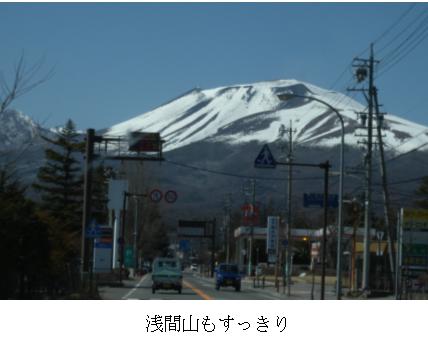
信州、特に「東信」と呼ばれる長野県の東側にあたる地域は、日本有数の果樹栽培の盛んな地域です。
地形や気候条件が果樹栽培に適しているため、すなわち浅間山の影響でなだらかな南斜面の地域が広がっており、晴天率が高いため日照時間が長く、高めの標高により気温の高低差があることが果実のおいしさに磨きをかけ、さらに冷涼であるため虫害も比較的少ないといった好条件がそろっていることなどがその理由です。そのため、東信は季節ごとの木の恵みであるブドウやリンゴ、プルーン、ブルーベリー、クルミやクリなど、とてもおいしい果物やその加工品が豊富に出回ります。
弊社のある軽井沢はこうした東信地区にあたりますが、標高1000メートルの寒冷地であり霧が発生しやすく(年間130日程度)、さらには別荘、企業の保養所など大きな木立に囲まれた場所が多いため、果樹の栽培にはあまり適していないと言われております。しかし、実際には場所によっては霧も比較的少なく、日照も相当強い地域もありますし、いくつかのブルーベリー農園もあるようです。
私どものソフィアート・ガーデンでも、果樹を試みにいくつか植えておりますが、まだまだ小さく、いつになったら収穫できるやら、見当がつきません。
そこで、果物のシーズンには少し車を走らせて、近隣の果樹栽培のさかんな市町村まで出かけてゆき、栽培農家や道の駅のマルシェなどに買い求めに行きます。
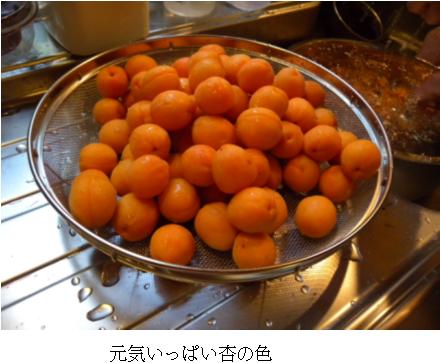
東信地区を越えて、もう少し車を走らせれば、千曲市(更埴)の杏(あんず)の里があります。今年は冬から春先にかけて例年よりかなり寒かったため、少し遅れて今頃にアンズの花が満開になっているようですが、やがて6月末には、次々と杏の実の収穫期を迎えることになります。
杏は、梅のように全国的にいろいろな地域で栽培されるわけではなく、ごく限られた地域でしか栽培されないため、梅ほどメジャーではありませんが、一度その味を知ると杏なしでは生きていけないほど大好きになることでしょう。
何を隠そう、私自身がそうです。杏は、見ているだけで元気の出る美しさです。
まず「平和」という代表品種あたりからはじまり、「昭和」「信州大実」「信山丸」「ハーコット」「信月」などと次々と収穫のリレーをつないでいき、7月中旬にはすべての収穫が終了してしまう、という大変旬が短い果実です。その時期を逃してしまえば、もうこの先一年間は、生の杏にお目にかかることはありません。
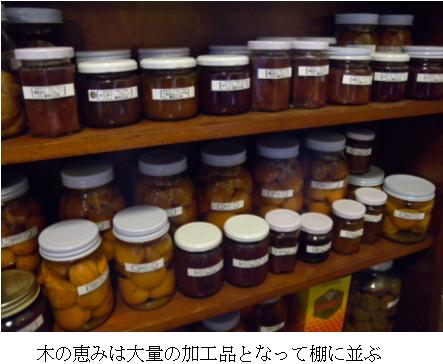
そこで、私どもは杏をいつもの栽培農家から大量に買い求め、寝る間も惜しんで加工します。新鮮な間は、もちろん生でモリモリいただきます。でも杏を砂糖と加熱すると、魔法のように色つやと味が鮮やかに変化します。
生で食べると、おいしいとは思うものの、すこしぼんやりと甘酸っぱい感じなのですが、杏は砂糖と熱に出会うと、まるで全く別物になります。杏のシロップ漬けは、食べられるようになるまで何ヶ月かかかりますが、長期に保存しても色も形も崩れず、漬け終わったシロップは杏の種(杏仁豆腐のアンニンですね)のさわやかな香味がいっぱいで、ヨーグルトなどに混ぜると上等なデザートになります。
昨年はもらったものも含め、25キロ以上の杏の実に囲まれ、せっせとコンポート、コンフィチュール(ジャム)、砂糖シロップ漬けといった長期保存用に加工しました。
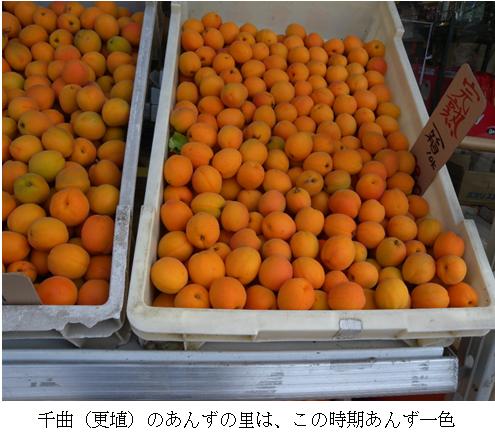
なぜ20キロ超も? 杏は収穫期がとても短く、また大人気ですぐに売り切れてしまうこともあり、買うときはこうならざるを得ないのです。
さらに夕方近くになって、あんずの里の農協婦人会の方々が、売れ残った大量の杏を処分に困った顔で「奥さんこれもらってくれないかねえ・・・」と箱ごと無料で分けてくださったのです。その杏の実は少し過熟で形に難はありますが、スーパーなどで売られる未熟気味の果実に比べて大きくて色鮮やかでおいしそうです。
その方の話では、杏は足が速く痛みやすく、また毎日たくさんの新たな実を収穫するため、その日に売り切らなければ山に捨てに行くしかないようです。
こちらも嬉しいような、しかしこれから待ち構えている大量の加工作業を思うと苦しいような気持ちで、ありがたく頂戴することにして、そしてただでもらうだけでは心苦しいのでお礼に贈答用の杏も買って、25キロ以上にもなるアンズを抱えて帰途についたのでした。
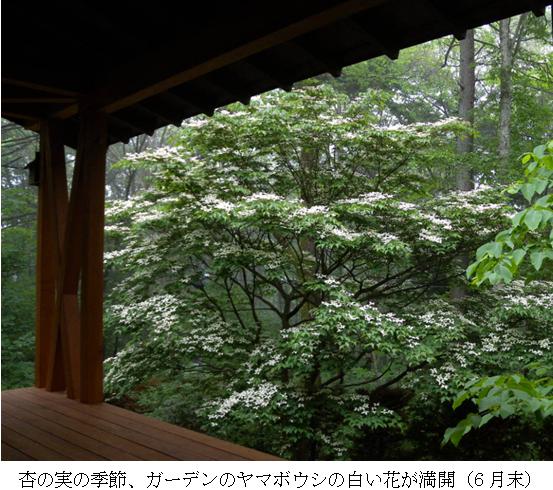
杏の季節はちょうど梅雨の蒸し暑い時期にあたり、いくら冷涼とはいえ、ここ軽井沢でも大量の加工品づくりは熱気と湯気とで苦しくなります。
しかしソフィアート・ガーデンは見渡す限りを雑木林に囲まれていますので、緑陰のありがたさを感じます。
去年は杏を買った直後に連続した出張を控えていたため、ほとんど徹夜状態でパートナーとともにアンズ加工業者のようにひたすらがんばって加工し、瓶詰めしました。
今年こそは前年の反省をもとに、何事もほどほどに収めようと決意していますが、こうした「がんばり」と「反省」はなぜか毎年繰り返されます。
『 ソフィアート・ガーデン物語 』 第6話 「木の恵み 1」
有限会社ソフィアート スタッフM( 竺原 みき )
関連する物語
The Tale of Sophiart Garden
>>To the Previous Story | >>To the Next Story
Episode 6: “The Blessings of Trees 1”
April 17, 2012 – Special Edition (Part 1)
When we speak of the blessings of trees, the first thing that comes to mind is undoubtedly fruits and nuts. Humans, birds, insects—everyone loves them.
Today’s weather has been a study in contrasts. A midday thunderstorm gave way to a serene, bright blue sky, and Mount Asama, still crowned with snow, stands crisp and clear in the distance. Days like this fill me with a restless energy, making it impossible to stay indoors.
So, for this installment of Sophiart Garden Stories, we’re doing something a little different—we’re venturing beyond the garden’s borders.
The eastern region of Nagano Prefecture, known as Tōshin, is one of Japan’s premier fruit-growing areas.
Its terrain and climate are ideally suited for orchards. The gentle southern slopes formed by Mount Asama provide ample sunlight, thanks to the region’s high rate of clear days. The high altitude creates significant temperature variations, enhancing the sweetness of the fruit, while the cool climate helps reduce insect damage.
As a result, Tōshin is blessed with an abundance of seasonal fruits—grapes, apples, plums, blueberries, walnuts, chestnuts—and a wealth of delicious fruit-based products.
Karuizawa, where our company is located, also belongs to the Tōshin area. However, at an elevation of 1,000 meters, it is considered a cold region, often shrouded in mist for about 130 days a year. With its vast groves of towering trees, home to vacation homes and corporate retreats, Karuizawa is not thought to be well-suited for fruit cultivation.
Yet, in reality, some areas have relatively little fog and receive strong sunlight. A few blueberry farms even thrive here.
At Sophiart Garden, we have planted a few fruit trees as an experiment. But they are still small, and we have no idea when—or if—we will ever harvest anything from them. That’s why, when fruit season arrives, we take a short drive to nearby towns and villages known for their orchards, stopping by local farms or michi-no-eki (roadside markets) to buy our seasonal bounty.
A little farther beyond Tōshin lies Anzu no Sato (Apricot Village) in Chikuma City.
This year, due to an unusually cold winter and spring, the apricot blossoms have bloomed later than usual. But by late June, the trees will be laden with fruit, marking the start of the harvest season.
Unlike plums, which are grown in various regions across Japan, apricots are cultivated only in a few select areas, making them far less common. But for those who have experienced their taste, life without apricots seems unimaginable.
I should know—I’m one of them.
Apricots possess a beauty that lifts the spirit at a mere glance.
The harvest season begins with the Heiwa variety, followed by Shōwa, Shinshū Ōmi, Shinzanmaru, Harcot, and Shingetsu, each taking its turn in a brief relay of abundance. By mid-July, the entire harvest is complete. Miss this fleeting window, and you’ll have to wait an entire year to taste fresh apricots again.
When the season arrives, we purchase apricots in bulk from our usual orchard and spend sleepless nights processing them.
While they are still fresh, we devour them raw, of course. But apricots undergo a magical transformation when combined with sugar and heat.
Fresh apricots, while delicious, have a rather mild sweet-and-tart flavor. But when they meet sugar and warmth, they turn into something completely different. Apricots preserved in syrup take several months to reach perfection, but they retain their shape and vibrant color even after long storage. The infused syrup, rich with the fragrance of apricot kernels (the same annin used in almond tofu), makes a luxurious addition to yogurt or desserts.
Last year, between our purchases and some gifted to us, we found ourselves surrounded by more than 25 kilograms of apricots. We worked tirelessly, preserving them in the form of compotes, jams, and sugar syrup infusions.
But why over 20 kilograms?
The apricot harvest is fleeting, and demand is high. It’s not uncommon for the fruit to sell out almost instantly. When you find good apricots, you have to stock up.
Late one afternoon, the ladies at the local agricultural cooperative, faced with a surplus of unsold apricots, hesitated before approaching us.
“Would you take these off our hands…?” they asked, offering us entire crates for free.
The apricots, slightly overripe and perhaps not as visually perfect, were still far superior in flavor to the under-ripe ones often found in supermarkets.
Apparently, if they couldn’t sell them that day, they would have no choice but to dispose of them. Apricots spoil quickly, and with fresh fruit being harvested daily, there was simply no room to store them.
While delighted by this unexpected gift, we also felt a pang of dread at the mountain of preservation work awaiting us. Still, we gratefully accepted the crates and, in return, purchased a box of high-quality apricots as a token of appreciation.
And so, we set off for home, 25 kilograms of apricots in tow.
The apricot season coincides with the hot, humid days of the rainy season. Even in the cool climate of Karuizawa, preserving such a massive quantity of fruit fills the air with heat and steam, making the task all the more grueling.
Thankfully, Sophiart Garden is surrounded by lush woodlands, offering a welcome respite from the summer sun.
Last year, I had back-to-back business trips immediately after purchasing the apricots. With no time to spare, my husband and I worked through the night, transforming ourselves into an apricot-processing factory.
This year, we vowed to take a more measured approach, learning from past experience.
And yet—somehow—this cycle of overzealous enthusiasm and subsequent reflection repeats itself year after year.
The Tale of Sophiart Garden
Chapter 6: “The Blessings of Trees 1”
Miki Jikuhara, Sophiart Karuizawa
Related Stories
>>Episode 6: “The Blessings of Trees 1”

